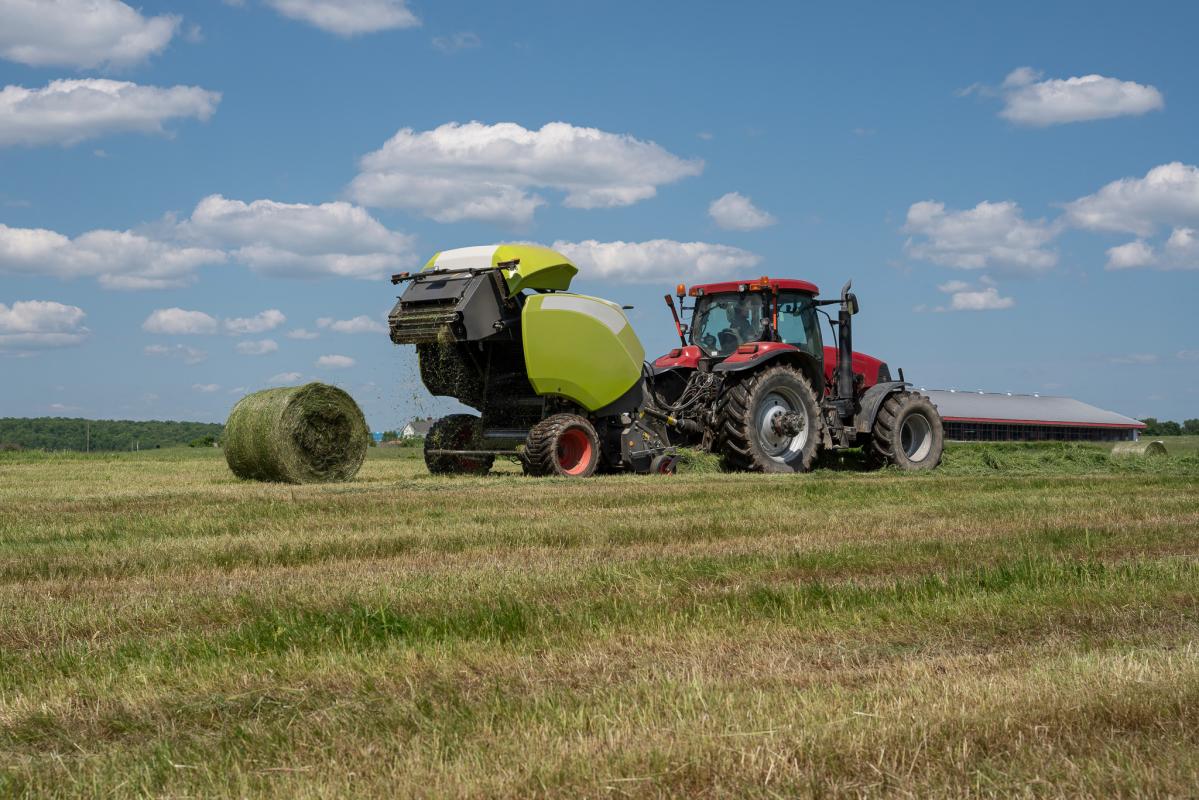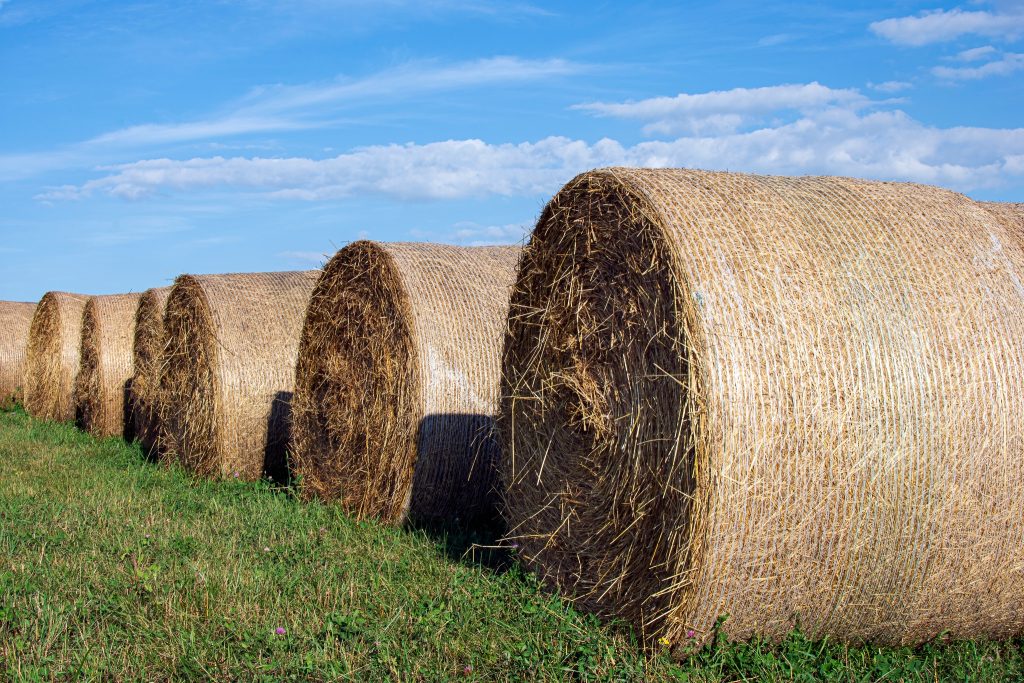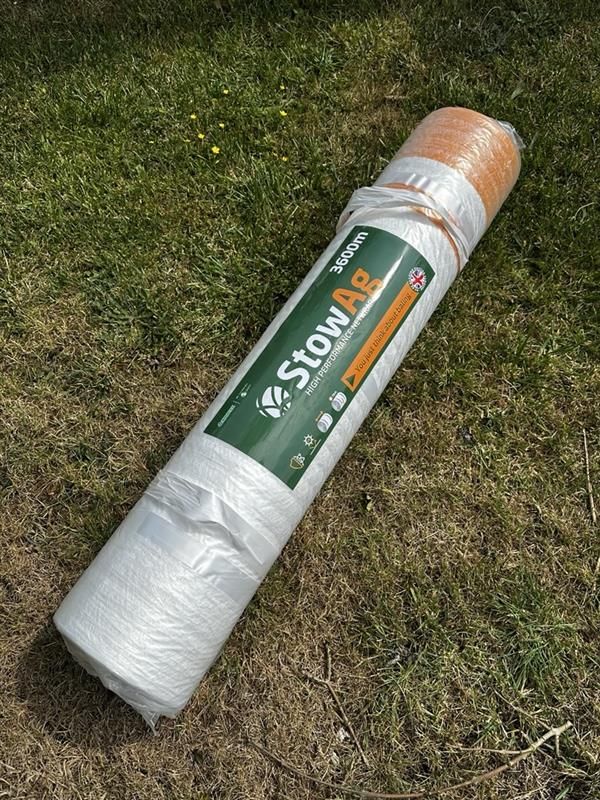
Creating consistently shaped, well-protected round bales isn’t just about having the right baler, it’s also about how you use your netwrap when working with crop packaging. Whether you're baling hay for feed or straw for bedding, using your netwrap correctly is key to preserving quality, improving storage, and reducing waste.
In this article, experts at Tama share their tips to help you get the best performance from your netwrap and ensure top quality bales, every time.
1. Start with quality netwrap
Not all netwraps are created equal. Choose a high quality, UV stabilised netwrap that’s designed for durability and consistent coverage such as StowAg - High Performance Netwrap. Incorporating ME+ Technology by Novatex, ensuring improved tension, a better spread across the bale and at the same time reducing carbon footprint.
StowAg's premium wrap will:
- Deliver full width coverage for crisp bale edges
- Resist tearing and weathering during storage
- Minimise wrap waste and application errors
Investing in the right netwrap means fewer problems in the field, and better bale integrity later in the season.

2. Check baler settings before you start
Before the first bale hits the chamber, make sure your baler is correctly set up:
- Ensure tensioners and rollers are clean and free of debris
- Set the net tension according to the manufacturer’s recommendation
- Check the knife system is sharp and clean for a clean cut at the end of each wrap
Incorrect setup is one of the most common causes of uneven wrapping, poor coverage, or net splitting.
3. Wrap to the edge….every time
StowAg's high performance Netwrap is designed to cover the full width of the bale, forming clean, uniform shoulders. This ensures:
- Better weather resistance when stored outside
- Easier stacking and handling
- Less chance of loose straw or hay falling out during transport
If your netwrap consistently falls short of the bale’s edge, check that: - The roll is properly aligned in the baler
- The net is threading correctly through the feed system
- You're using a quality netwrap that matches your baler's width and specs

4. Use the right number of wraps
Don’t skimp on wraps, it’s a false economy. The number of wraps depends on crop type, storage conditions, and handling needs:
- Grass typically requires 2 to 3 wraps
- Straw would often need 3 to 4 wraps
- Difficult crops (especially dry straw, and when stored outside or handled multiple times) 4+ wraps
Extra wrap helps maintain the bale shape and prevents unravelling or damage during stacking or transport.
5. Bale at the right moisture level
Moisture content has a major impact on bale density and wrap performance:
- Hay should be baled between 15 and 20% moisture
- Straw ideally below 14%
Wet material creates heavier, looser bales that are harder to bind tightly, and can damage netwrap or cause fermentation if stored incorrectly. Dry, well cured material produces dense, clean bales that wrap and store better.
6. Avoid overloading the baler
Overfilling the chamber or baling material that’s too wet or fluffy can cause:
- Uneven bale shapes
- Poor net distribution
- Wrap breakage or tearing
Maintain a steady, even feed into the baler to produce uniform, high density bales that hold their shape.
7. Keep things clean
Regular maintenance keeps everything running smoothly:
- Clean buildup around the netwrap feeding system regularly
- Check rollers, guides, and tensioners for wear
- Inspect knife blades regularly and replace (or sharpen) when dull
Dust, crop residue, and chaff can interfere with netwrap feeding and application.
8. Store netwrap properly
When not in use, store netwrap in a dry, covered location, ideally out of direct sunlight. Long term UV exposure can weaken the material and affect performance. Quality net wraps like StowAg are UV resistant and designed for long term storage.
If storing outdoors:
- Use breathable covers; avoid waterproof tarps or films that can trap moisture and damage the bales
- Keep rolls off the ground to avoid moisture uptake
In summary: smart netwrapping makes better bales
The quality of your netwrapped bales is a direct result of the care and attention you give the process. By following the above best practices:
- You reduce downtime and wrap waste
- You improve bale appearance, durability, and storage life
- You get more value from every bale you make
- You contribute to environmental sustainability
Whether you’re a contractor pushing through hundreds of bales a day, or a farmer storing straw for winter bedding, utilising the netwrap in the correct way, will always pay dividends in the future.
We stock the latest high performance, ME+ StowAg Netwrap designed to deliver clean, secure bales in all conditions. Talk to your local StowAg Store or contact us directly for advice tailored to your baler and operation.
